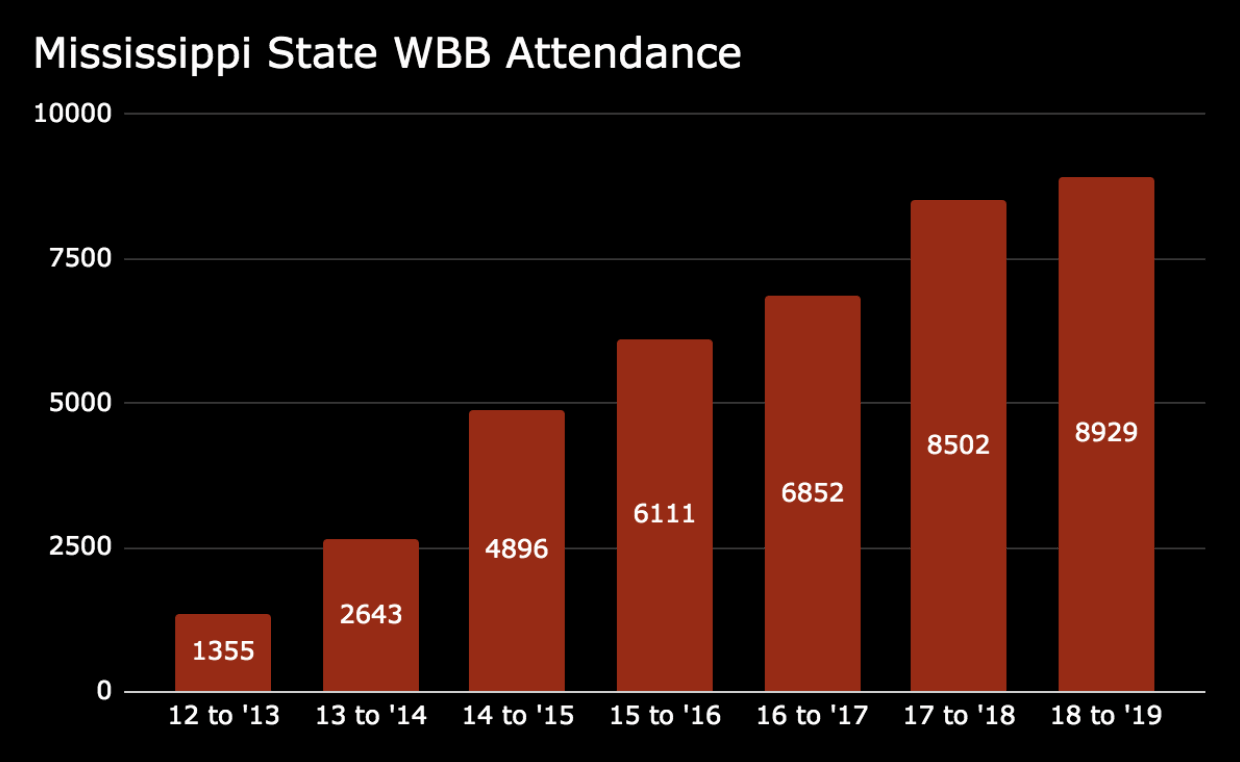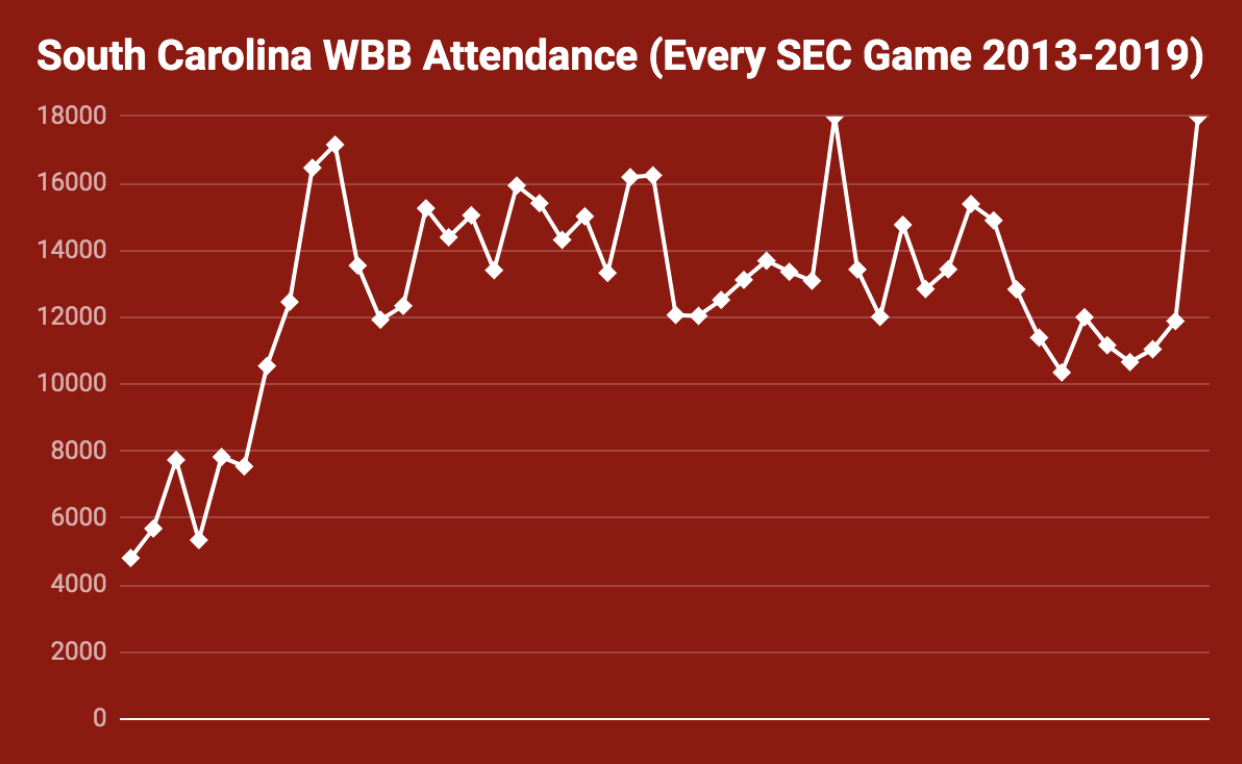Oregon Women's Basketball Rises Into the Upper-Class of Fanbases
On Jan. 11, 2015, a crowd of 2,106 fans came to Matthew Knight Arena in Eugene, Ore, to watch the Ducks lose by over 25 points to Oregon State for the second game in a row. This was newly hired coach Kelly Graves’s first taste at the Civil War rivalry. It was the largest crowd Oregon Women’s Basketball drew in the 2014–2015 season.
The following year, Oregon’s Pac-12 attendance rose. The 2016–2017 season brought the arrival of future stars Sabrina Ionescu and Ruthy Hebard. Oregon enjoyed another impressive..
For the sixth year in a row, Oregon would fall to rival Oregon State at home, but the tides were shifting as Oregon only lost 43–40. A deep run in the NCAA tournament showed Duck fans that promising basketball awaited next year.
Oregon’s basketball fans started arriving in droves to watch the breakout sophomore season of Ionescu and Hebard. After drawing 4,370 for a rivalry game the year prior, Oregon was now averaging 4,790 fans in conference play during the 2017–2018 season. After another thrilling Elite Eight tournament run, Eugene was buzzing about the Ionescu-Hebard duo.
A crowd of 6,879 watched Oregon steal a late win over #18 Syracuse in their 2018–2019 home opener. Oregon cemented itself as a title contender in December when 8,951 people watched them defeat Mississippi State in Matt Knight. Another spike in attendance meant a crowd of 7,707 became the norm during Pac-12 play. The Ducks would claim victory over Oregon State at home, with a sell-out crowd of 12,364 on hand to watch.

In year five of the Kelly Graves era, Oregon Women’s Basketball has risen from the bottom of the Pac-12 to among the top programs in the nation. The fans in Eugene have noticed as Oregon’s attendance has increased nearly five times over in the same time span. Their 2018–2019 attendance places Oregon in a class of just eight NCAA Division I schools with over seven thousand average fans per game. With a majority of the NCAA drawing only one-third of the men’s crowd to women’s basketball, Oregon demonstrated a blueprint for success that has already worked all over the nation.
The amount of tickets sold at NCAA basketball games is correlated with winning. While team success does play a role in attendance figures, a comprehensive look at what factors built the loudest crowds in the NCAA reveals more beneath the surface.
Below is an interactive map of the 65 power-five (ACC, Big 10, Big 12, Pac-12, SEC) schools in the nation. Each bubble shows the men’s and women’s average attendance from the 2017–2018 season, as well as their end of season RPI rankings. The attendance gap metric states what percentage of the men’s attendance makes up women’s attendance. The nationwide average is 36 percent.
(Map not available)
Oregon saw its talented team and decided to invest in advertising their stars. During the 2017–2018 season, a Wonder Ducks campaign featuring local TV promos and posters around the UO campus marketed Oregon’s emerging team as an epic squad of superheroes. These Wonder Ducks all had signature powers and nicknames like “Mighty Maite,” “The Swat Machine,” and “Miss Triple Double.” When Oregon Women’s Basketball led the entire NCAA in 2017–2018 attendance growth, the Wonder Ducks gained a seal of approval for a revamp the following year.
At the center of Oregon’s rise is “Commander Graves” and his enthusiasm for Eugene. Graves is active on Twitter not only hyping his own players but pushing for fans to pack Matt Knight on game days. Graves can be seen either roaming the floor or grabbing a mic after the game, thanking the fans in attendance and challenging them to come back and be louder the next game.
Starkville, Miss. has a similar fanbase transformed by an energetic coach. When Vic Schafer arrived in 2012, crowds of less than 2,000 watched Mississippi State Women’s Basketball. Just two seasons later the attendance had more than tripled in conference play. Associate Head Coach Johnnie Harris watched it all unfold from beside Schafer. Mississippi State is just one of two power-five schools in the NCAA where women’s basketball yields a larger crowd than men. While winning basketball games helps, Harris is quick to praise coach Schafer.
“I think he makes our players accessible to our fans, one of the things we do is our kids go up in the stands after every game and take pictures, sign autographs, thank fans for coming, and this is after every game,” Harris said.
Beyond simply putting out a winning product, Schafer’s dedication to the community pays dividends. Mississippi State’s athletic department has also seized the opportunity.
“I can say that our administration, is very supportive,” Harris said. “I think that’s a big part of it. I think our marketing team does a great job of promoting women’s basketball.”

The other power-five school with this distinction is in South Carolina. Columbia, S.C. reigns above all with the largest women’s basketball crowds. In February 2014, a top-five South Carolina Gamecocks squad defeated Florida en route to a perfect 17 and 0 home record. Over 10,000 fans jammed into Colonial Life Arena and it marked the beginning of an era. South Carolina began a streak of 42 straight SEC games with over ten thousand fans in attendance. In the past six seasons, South Carolina has only lost nine games at home with an average crowd of 12,748 in SEC play.

Rebecca Piner, works in marketing for South Carolina women’s basketball. She was hired to promote the women’s team out of college and quickly learned it was easy to follow the lead of coach Dawn Staley.
“She’s just made such a connection with our fans in Columbia, she’s never above going out to any community event, taking pictures, talking with anyone who wants to talk,” Piner said. “She tries to fill as many requests as she can from our fans. She’s made the program accessible in ways I’m not sure other schools do.”
South Carolina’s marketing and social media teams capitalized on the opportunity. The relationship between the team and community is so healthy that fans lovingly refer to themselves as “fams.’’ Piner shared South Carolina’s unique social media approach.
“How we interact with our fans is a little bit different, we’re not just spitting news at them and telling them to care, when they tweet good news that’s happening in their lives we might like it or comment on it through the official account,” Piner said. “We’re really talking with them and making them feel like they’re our friends. You wanna go support your friends, you might go support a good team.”
South Carolina’s top fan base was built by Dawn Staley and is now supported by a team philosophy that fans are all included in one big family. South Carolina still leads the NCAA in women’s basketball attendance despite falling short of the final four two seasons in a row.
First at South Carolina, then Mississippi State, and now at Oregon, the book is being written on how to sell tickets for women’s basketball. Having a good team is important, but making players and coaches accessible to fans is key. Once the right coach creates an exciting product, it is on athletic departments to capitalize and spread roots in the community.
With Sabrina Ionescu returning for her senior year, Oregon has their eyes set on the championship. Attendance will likely rise again as Eugene gets one final look at Ruthy Hebard and Sabrina Ionescu. The crowds will come to see an all-time great Ducks squad, but history shows they will stay for coach Graves and a team culture that values them.
